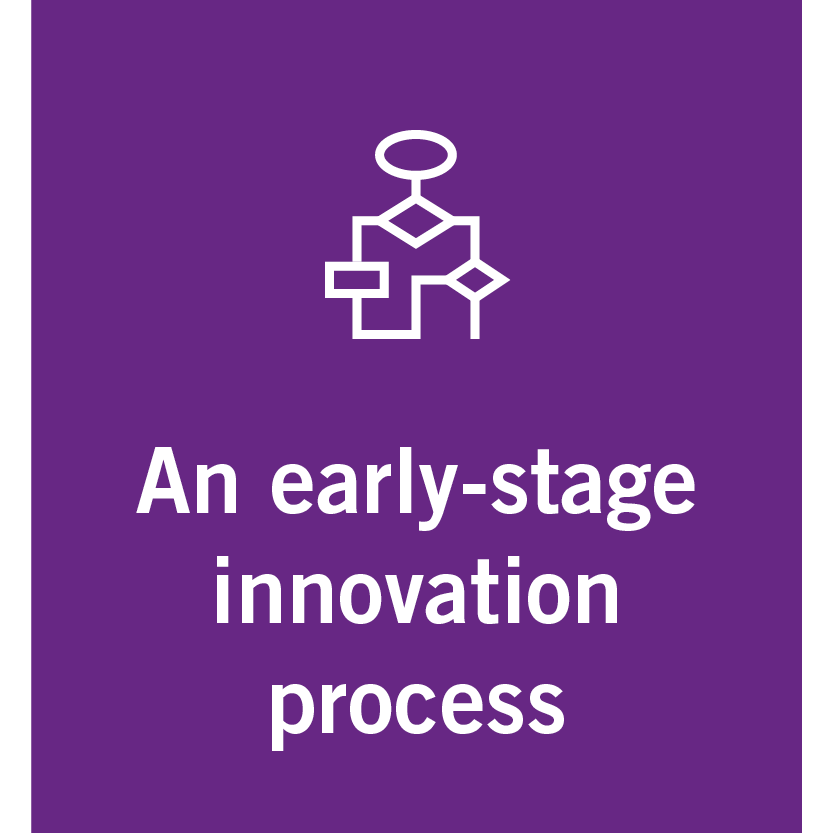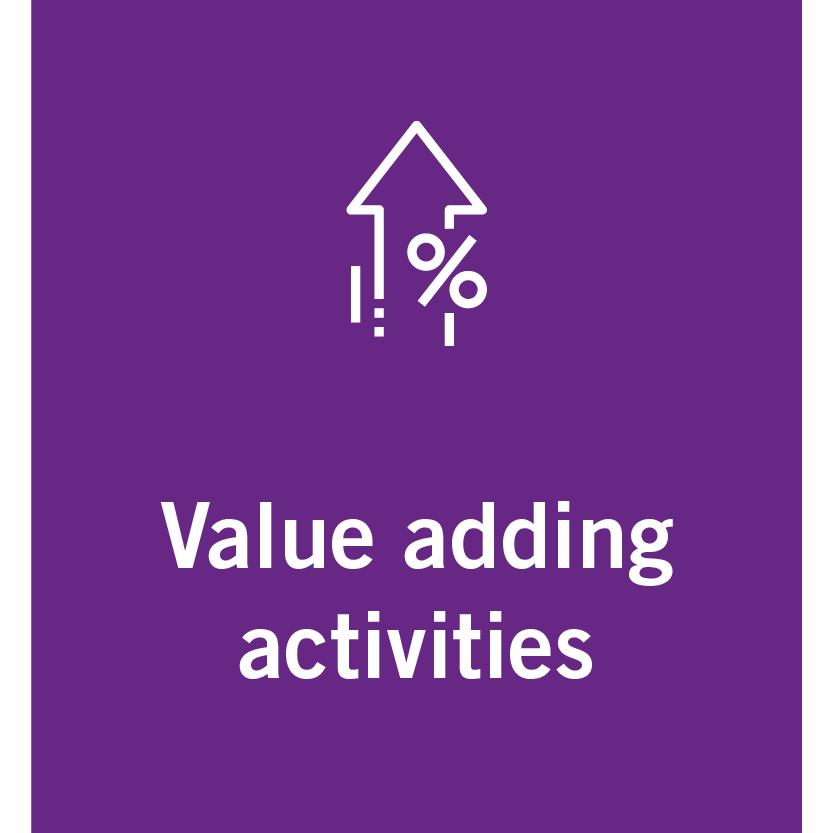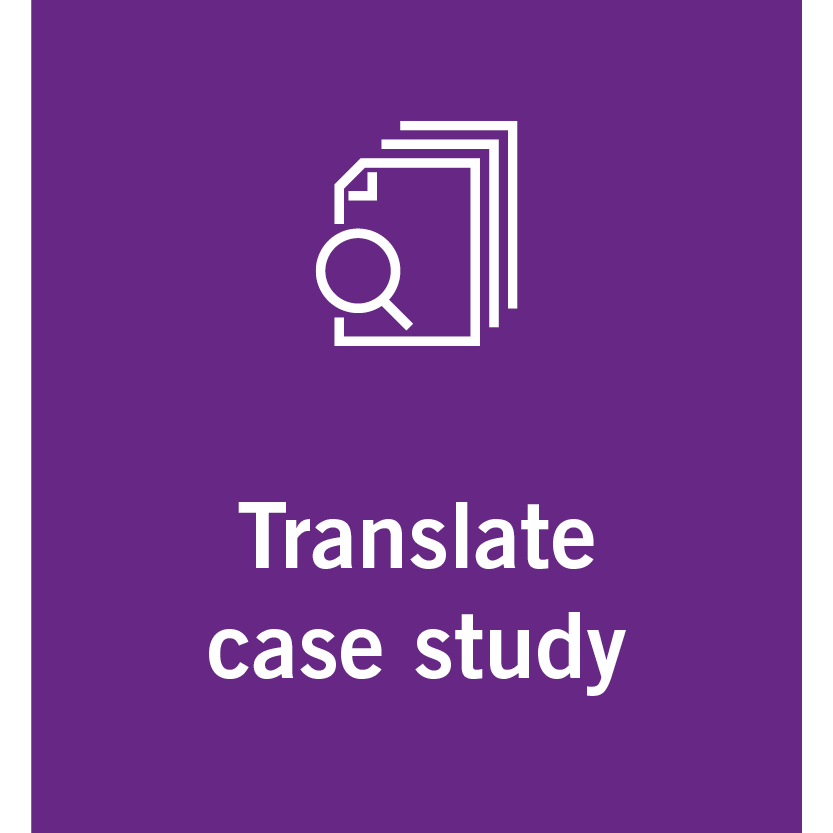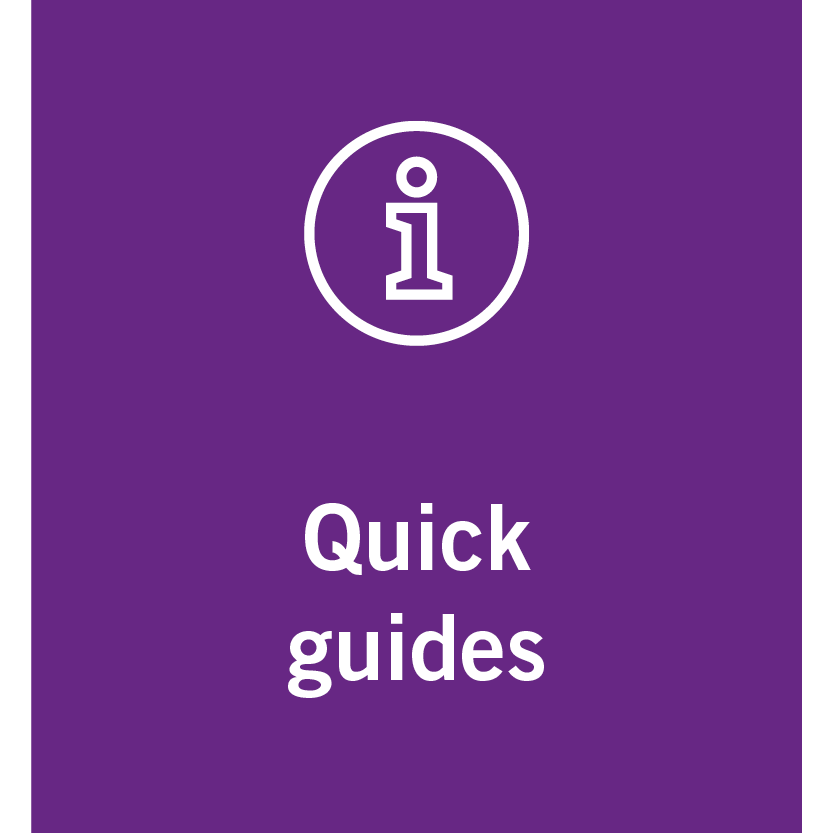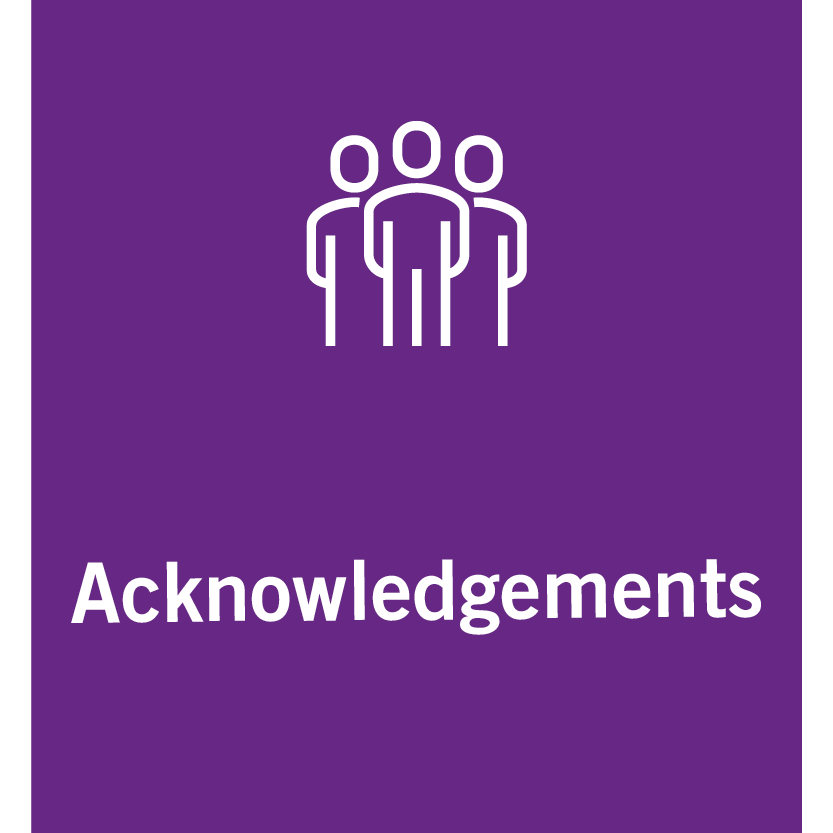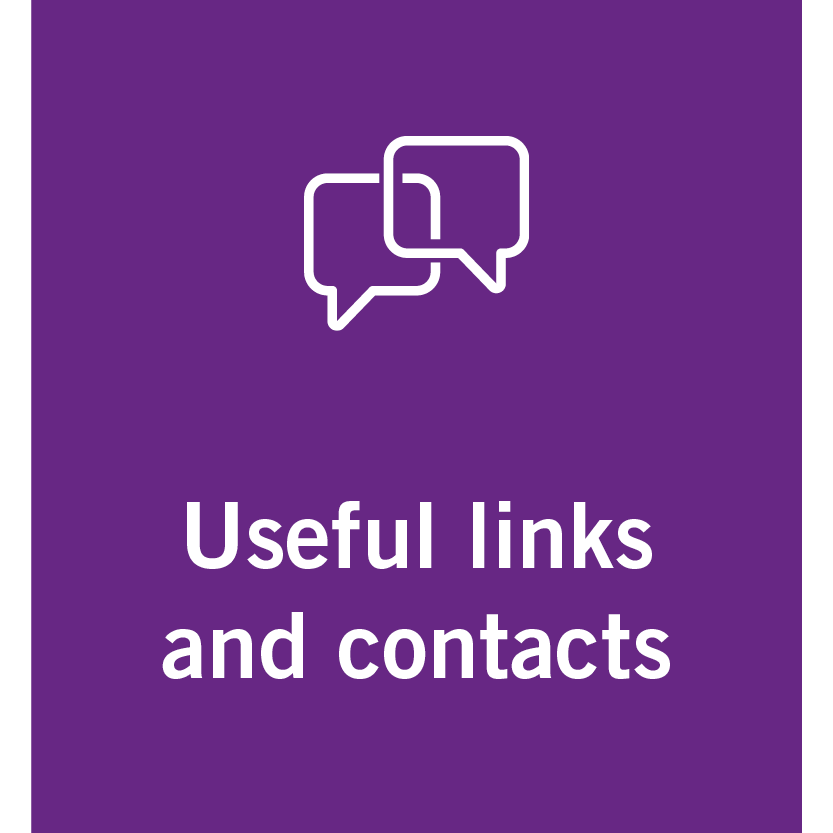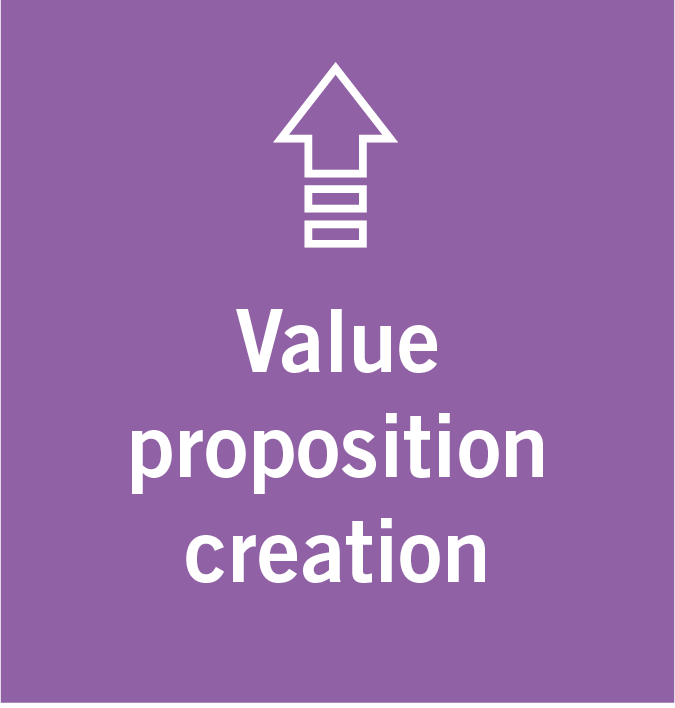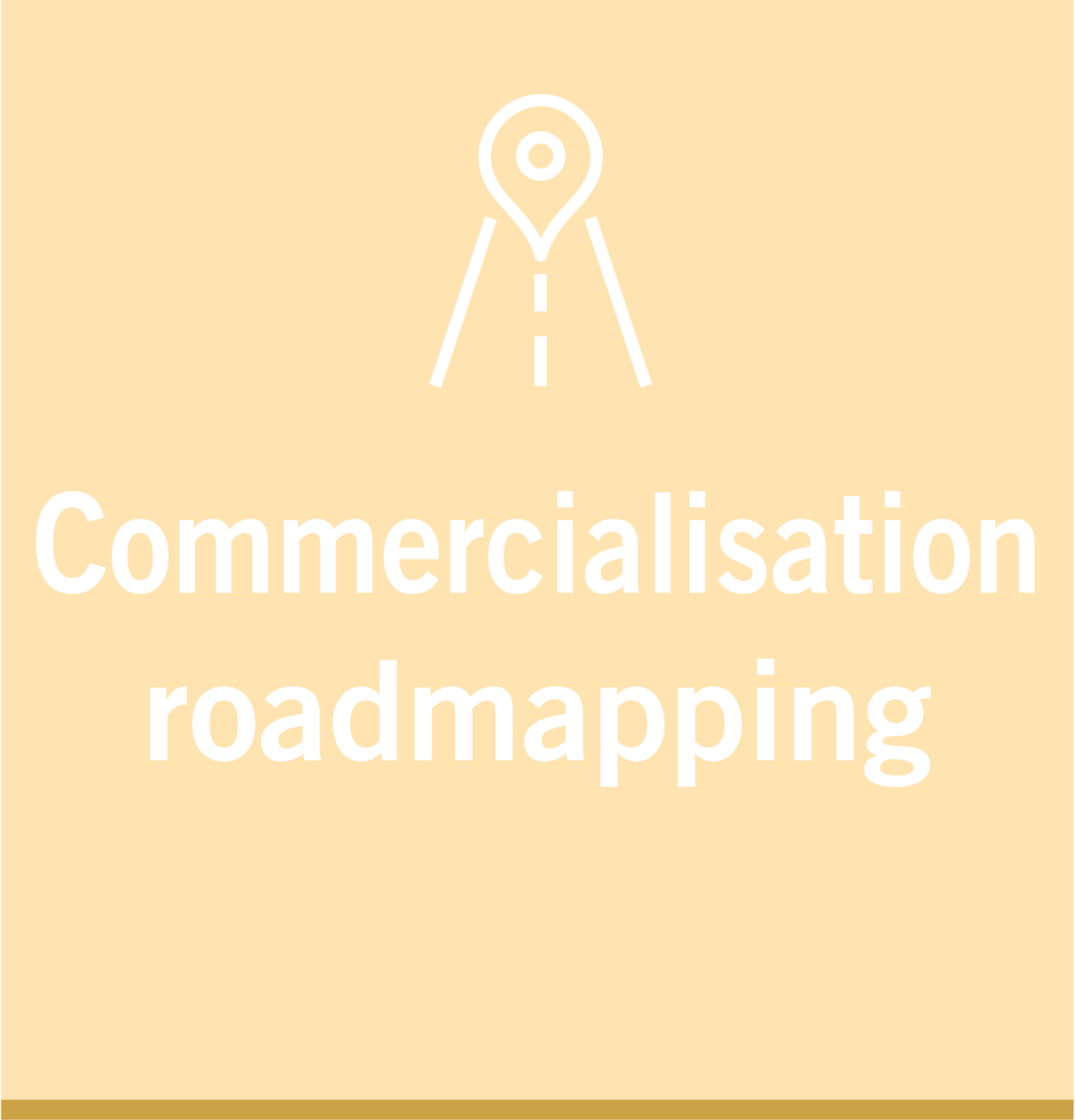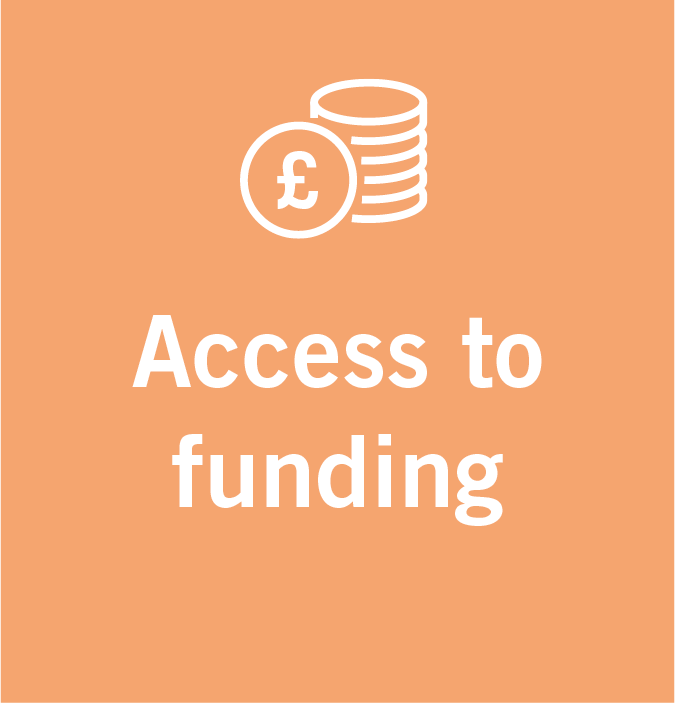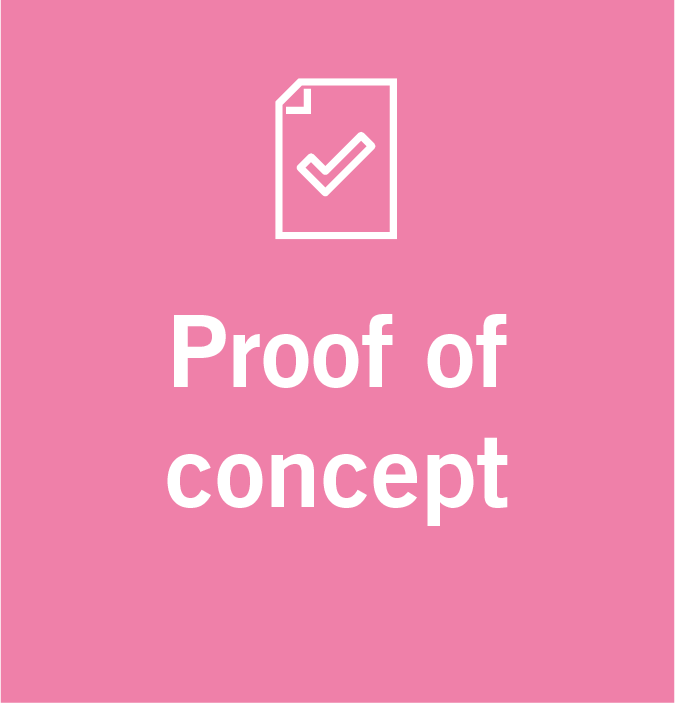





Investment-ready early-stage
tech innovation

De-risking innovation for
successful commercialisation
– a knowledge exchange
and commercialisation
practitioner’s guide

Contents



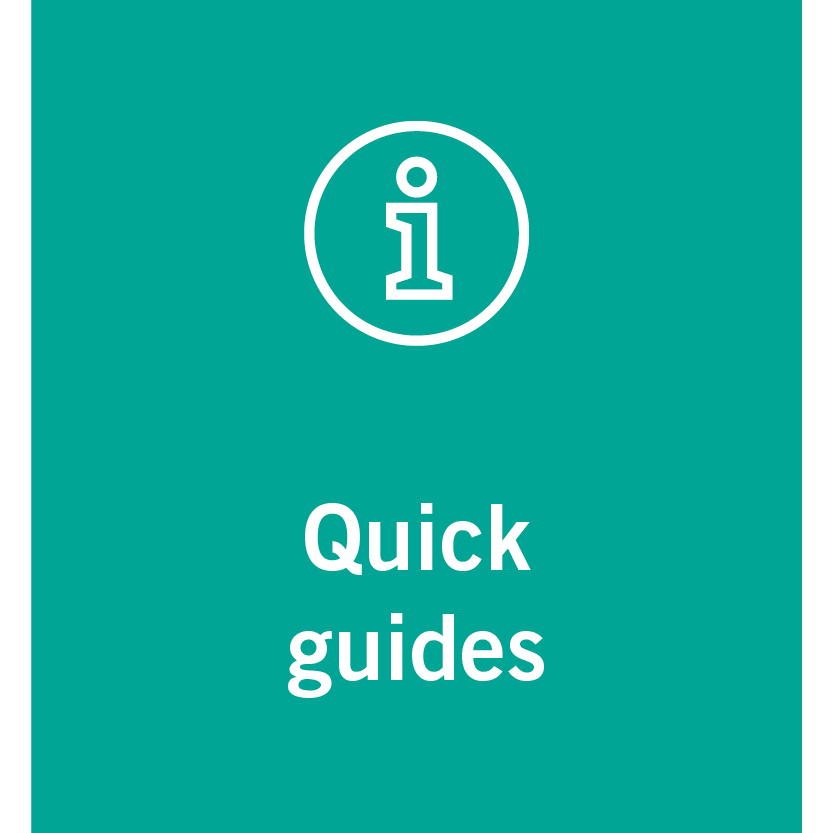



A note to knowledge exchange and technology transfer professionals
This guide explains how supporting innovation at an early stage
(Technology Readiness Levels 1-2) – rather than solely the later stages
that a KEC practitioner might usually work at – will accelerate technology progression. It takes key learning points from Translate, a HEFCE Catalyst-funded (now Office for Students) programme established to improve health and wealth in the Leeds City Region by translating ideas into new medical technologies.
This is a step-by-step good practice guide that can be applied to a wide
range of technologies, across several stages of development, to de-risk technologies at an early stage. This early support will lead to better commercial potential and later-stage adoption.
It includes practical quick guides with tips and useful documents, which
can be used to deliver some of the suggested activities. There are also
case studies to illustrate the process with real examples.
As a Knowledge Exchange and Commercialisation (KEC) practitioner, you translate research outcomes into products and services that have an economic and social impact – often with endless complexities. It can be a long, complex and difficult journey.
Reducing the risk and uncertainty associated with new technologies is more likely to open the door for private sector investment to develop commercial products and deliver economic benefits. Managing risk is crucial to businesses working at the forefront of novel technologies.
Our experience has found that by focusing on early-stage innovation in a proactive way – through activities that identify problems, generate new ideas, and build productive teams – technology innovation projects are more likely
to lead to success. We have also discovered that investing our time into one specific sector – building knowledge and expertise, developing capability and capacity, and creating a network of academics, research users, and innovation enablers – greatly increases the chance of innovation success.
Previous
Next
Contents







This easy to follow innovation process can be applied to a wide range of technologies and sectors, across several stages of development.
Your goal is to de-risk technologies
at an early stage: accelerating the
innovation process, and making
technologies more attractive to
industry. The stages are:
An early-stage innovation process
The process is iterative,
and each stage ends in a
stage-gate with four options:
This core model is underpinned by activities like building a technology innovation network, and brokering project teams
around specific technologies.
Teams may enter and exit the process at any stage, depending on the technology. These teams – a mix of academic, industry and end-user representatives – are the core unit that, together with the technology, travel through the process.
Need-led
formation of ideas
Value proposition
creation
Commercialisation
roadmapping
Access to
funding
Proof of
commercial concept
Repetition of the stage
Advance to the next stage
Disengage with the project
Hand over to a partner or collaborator



Repeat
Next stage
End
Hand-off
Throughout this process there are low barriers for academics and researchers to engage with innovation and translation.
Each cycle or iteration brings a new learning opportunity that builds retained innovation capability.
Previous
Next
Contents







Explore the process: you can enter at any stage depending on the maturity of your technology project
An early-stage innovation process
Previous
Next
Contents


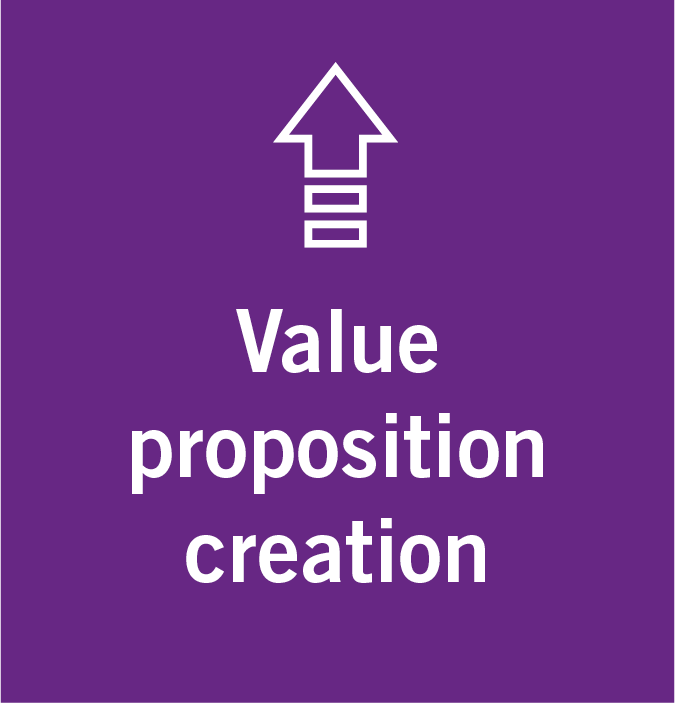
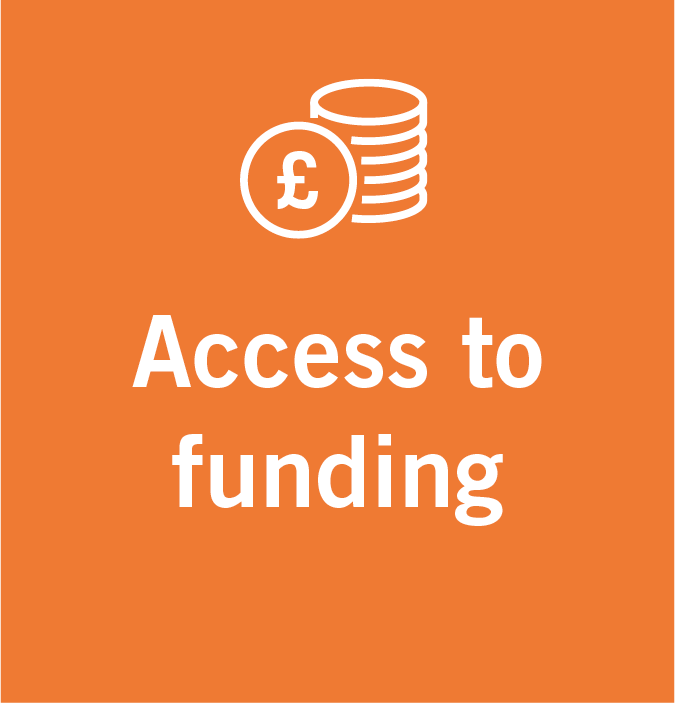








Your activities should focus on bringing people together around market needs and technology opportunities. The most productive activities include:
Formation of ideas
- Innovation workshops that are open to all and partnered with industry or end-user group organisations, and with a strong thematic focus. A challenge-led approach optimises the potential for high quality concepts.
The thematic focus of an innovation workshop should be tailored to your institution or consortium’s academic strengths.
- Project scouting, identifying academics with technologies with high innovation potential, who may be unaware of its possibilities or how to develop it.
academic technologies, or unmet industry or user needs, and develops them into packages for further exploration of their potential
This stage starts with:
Tip
Formation of ideas should be needs-led or problem-focused
Partnering with a strategically aligning organisation, programme
or end-user group can help you to:
- frame the need or problem
- access a wider network of specialists and experts
- add credibility – to the event and the approach to innovation
Previous
Next
Contents








Formation of ideas
Activities
Partner with user group
Identify academics
Tailor the topic
Discuss technology
Optimise attendees
Identify preliminary market opportunities
Explore problems
Build preliminary team
Assess project and networking
Repeat
You will need to repeat this part of the process if:
- You discover new information about your technology idea
- There are still gaps in your knowledge
- There is a change in the external environment, for example new regulations come into force, or new products enter the market.
Next stage
Stages of the process must sometimes be repeated. Each cycle of the iterative process brings a new learning opportunity that builds retained innovation capability.
End
If a project is assessed to have no market opportunity, no user need, has too many technical risks, will be expensive to produce, or has a weak IP position, it should be ended early.
Tips on helping to end project opportunities:
- Be clear from the outset about what success looks like
- Continue to engage with the project pioneer, scoping for new opportunities;
it’s the end of the project but not the relationship
- Seize the opportunity to take key learnings from the process and document what did and did not go well. They should not be afraid to fail, but are probably not used to it.
Hand-off
Projects can be handed over to organisations with a greater focus, capability,
or resource to accelerate technology progression and commercialisation.
Hand-off could be into delivery partners such as industry.
|
Tip: To efficiently hand off the project to a delivery partner, you need a |
By the end of the process you will
have formed your earliest
concept and team
Produce skeleton projects
Previous
Next
Contents
















The best teams combine academic, industry and end-users:
Value proposition creation
optimising the understanding of target unmet needs, and late stage development factors. You can broker new partnerships to create
teams with the right knowledge and skills.
The team should focus on the creation of value
propositions around the core technology, and develop
a deeper understanding of the commercial opportunity.
The value propositions can be developed through an
iterative process, which guides the team in developing ideas
and evidencing the applicability of the technology to each
particular market need.
a target technology
and technology
project team
This stage starts with:
Some examples of end users
in different sectors:
Fintech:
consumers, businesses,
financial service providers
(e.g.retail banks, insurers)
Robotics:
consumers, service providers
(e.g. healthcare), businesses (e.g. automotive,
aerospace, energy, space, and defence sectors)
Healthtech and medtech:
patients, people living with
conditions, clinicians,
healthcare professionals,
care providers.
Previous
Next
Contents














Value proposition creation
The iterative process can start with any
of the four major activities:
Activities
Unmet need
target(s)
Deepen value
proposition
understanding
Validated product
specification
and vision
Repeat and develop
The outcome of this stage
is a value proposition and
a complete ‘business case’, including: technical feasibility, market attributes, user group profiles, commercial pull, commercial state of the art, competitors, and potential commercial partners.
Academic
Industry
Patients
Clinical
Technical understanding
or technical feasibility
analysing the design, materials,
and build requirements:
is the technology technically
feasible to produce?
Market understanding
researching key features of the market, as well as direct information gathering activities, such as end user and supply chain consultation workshops
Identifying unmet needs or problems
that the target technology could
be applied to or solve
Build technology/
needs fit
reviewing the technology
and market needs
Repeat
You will need to repeat this part of the process if:
- You discover new information about your technology idea
- There are still gaps in your knowledge
- There is a change in the external environment, for example new regulations come into force, or new products enter the market.
Next stage
Stages of the process must sometimes be repeated.
Each cycle of the iterative process brings a new learning opportunity that builds retained innovation capability.
End
If a project is assessed to have no market opportunity, no user need, has too many technical risks, will be expensive to produce, or has a weak IP position, it should be ended early.
Tips on helping to end project opportunities:
- Be clear from the outset about what success looks like
- Continue to engage with the project pioneer, scoping for new opportunities;
it’s the end of the project but not the relationship
- Seize the opportunity to take key learnings from the process and document what did and did not go well. They should not be afraid to fail, but are probably not used to it.
Hand-off
Projects can be handed over to organisations with a greater focus, capability, or resource to accelerate technology progression and commercialisation.
Hand-off could be into delivery partners such as industry.
|
Tip: To efficiently hand off the project to a delivery partner, you need a clear understanding of the sector and technology. Building a network, understanding the project’s USP and mapping your innovation ecosystem |
Previous
Next
Contents













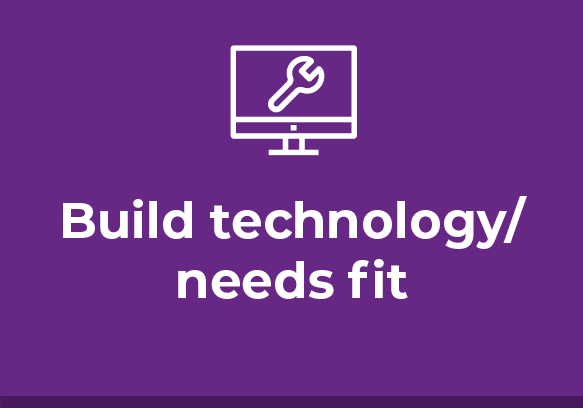




Repeat and develop






Commercialisation roadmapping
The aim of this stage is to develop an understanding of the key issues driving
success in taking the technology to market.
Key issues
Repeat and develop
- Regulatory & compliance
- Market entry & adoption
- Financing & exit points
- Quality assurance
- Manufacturability
- Reimbursing options
- Profit models
- Product staging
Repeat and develop
Your team can then use this information to turn the value proposition into funding bids or pitches to industry partners.
Value proposition mapping has three main areas:
-
Identifying late stage development requirements,
for example market entry and adoption, reimbursement, product staging, and manufacture
-
Identifying route to market – and associated challenges – including staging research and technology development along the innovation journey, obtaining regulatory approval, and managing intellectual property
- Identifying and engaging with partners who can help develop and promote the technology: including industrial partners, end-user or supply chain champions, and key opinion leaders. Project teams are then able to use this greater awareness, and links to potential partners, to further develop their commercialisaiton roadmapping.
- Research
- Technology
- Regulatory
- Intellectual property
- Commercial
- Industrial partners
- User champions
- Key opinion leaders
Next stage
Stages of the process must sometimes be repeated.
Each cycle of the iterative process brings a new learning opportunity that builds retained innovation capability.
End
If a project is assessed to have no market opportunity, no user need, has too many technical risks, will be expensive to produce, or has a weak IP position, it should be ended early.
Tips on helping to end project opportunities:
- Be clear from the outset about what success looks like
- Continue to engage with the project pioneer, scoping for new opportunities;
it’s the end of the project but not the relationship
- Seize the opportunity to take key learnings from the process and document what did and did not go well. They should not be afraid to fail, but are probably not used to it.
Hand-off
Projects can be handed over to organisations with a greater focus, capability, or resource to accelerate technology progression and commercialisation.
Hand-off could be into delivery partners such as industry.
|
Tip: To efficiently hand off the project to a delivery partner, you need a clear understanding of the sector and technology. Building a network, understanding the project’s USP and mapping your innovation ecosystem are crucial. |
Repeat
You will need to repeat this part of the process if:
- You discover new information about your technology idea
- There are still gaps in your knowledge
- There is a change in the external environment, for example new regulations come into force, or new products enter the market.
Previous
Next
Contents
















This stage starts with:
a value proposition







Access to funding
The aim of this stage is to secure grant funding for your project team to develop a proof of commercial concept around
one or more value propositions
your fundable
value proposition
This stage starts with:
Identify funding opportunities
Refine project team
Draft application
Technology
development plan
Submit Application
Review applications
Value proposition
Commercialisation
Strategy
Next stage
Stages of the process must sometimes be repeated.
Each cycle of the iterative process brings a new learning opportunity that builds retained innovation capability.
End
If a project is assessed to have no market opportunity, no user need, has too many technical risks, will be expensive to produce, or has a weak IP position, it should be ended early.
Tips on helping to end project opportunities:
- Be clear from the outset about what success looks like
- Continue to engage with the project pioneer, scoping for new opportunities;
it’s the end of the project but not the relationship
- Seize the opportunity to take key learnings from the process and document what did and did not go well. They should not be afraid to fail, but are probably not used to it.
Hand-off
Projects can be handed over to organisations with a greater focus, capability, or resource to accelerate technology progression and commercialisation.
Hand-off could be into delivery partners such as industry.
|
Tip: To efficiently hand off the project to a delivery partner, you need a clear understanding of the sector and technology. Building a network, understanding the project’s USP and mapping your innovation ecosystem are crucial. |
Repeat
You will need to repeat this part of the process if:
- You discover new information about your technology idea
- There are still gaps in your knowledge
- There is a change in the external environment, for example new regulations come into force, or new products enter the market.
Previous
Next
Contents

















Proof of concept
By continuing your support, your project team can navigate the later stages
of the technology translation process.
You can simply guide your teams as to the aims and objectives of the proof of concept process to effectively attract industrial partnership, while the teams themselves focus on the technical implementation.
This marks the end
of the early-stage
journey
Proof of commercial concept
Technical product performance
Design requirements
Detailed design
Manufacture
Validation and vertification
Experiments and analysis
Repeat
You will need to repeat this part of the process if:
- You discover new information about your technology idea
- There are still gaps in your knowledge
- There is a change in the external environment, for example new regulations come into force, or new products enter the market.
Next stage
Stages of the process must sometimes be repeated. Each cycle of the
iterative process brings a new learning opportunity that builds retained innovation capability.
End
If a project is assessed to have no market opportunity, no user need, has too many technical risks, will be expensive to produce, or has a weak IP position, it should be ended early.
Tips on helping to end project opportunities:
- Be clear from the outset about what success looks like
- Continue to engage with the project pioneer, scoping for new opportunities;
it’s the end of the project but not the relationship
- Seize the opportunity to take key learnings from the process and document what did and did not go well. They should not be afraid to fail, but are probably not used to it.
Hand-off
Projects can be handed over to organisations with a greater focus, capability,
or resource to accelerate technology progression and commercialisation.
Hand-off could be into delivery partners such as industry.
|
Tip: To efficiently hand off the project to a delivery partner, you need a clear understanding of the sector and technology. Building a network, understanding the project’s USP and mapping your innovation ecosystem |
Previous
Next
Contents

















Value adding activities
This mapping exercise takes a structured and objective approach to determine skills, strengths, needs and challenges based on an analysis of the innovation participants (such as academics, local industry, supply chain and end-user organisations).
The ‘map’ can be used to
-
target activities (such as innovation workshops) at the real strengths, skills, and needs
-
identify gaps in support and places for adding value,
which can help target your efforts -
form the basis of your innovation network.
Having an understanding in detail of the innovation ecosystem will allow you to engage more rapidly, closely, and successfully in identifying problems, creating technology solutions, and brokering partnerships.
Building a multi-stakeholder network is crucial. It will enable you
to deliver successful innovation workshops, reinforce and build the capability of project teams, and ultimately to drive better early-stage technology innovation and translation.
Network activities could include innovation workshops, as well as networking events, technology showcases, and activities focused
on professional development.
Supply chain and end-user consultation workshops, and relationship brokering on behalf of technologies and projects teams can both widen your network and provide direct value to the teams themselves.
Innovation ecosystem mapping
Innovation network building
There are several additional activities that can add significant value to this early stage innovation process.
Previous
Next
Contents







Previous
Next
Contents

Network building
Regional Medtech Innovation Ecosystem Mapping
-
Participants
-
Challenges
-
Strengths
-
Skills
-
Needs
Network building
Support output
-
Clinical and patient insight
-
Academic research
-
Industrial partners
-
Sector specific knowledge
-
Technology progression
-
Training/Mentoring/secondment
-
Skills and subject matter expertise
Network map
Translate
- Partner universities
- Other UK & global universities
- Funders
- Innovation enablers
- Industry bodies
- Charities
- Clinical/patient
- Industrial partners
- Academics
Activities
- Industry networking
- Professional development
- Clinical consultation workshops
- Patient consultation workshops
- Innovation workshops
- Project support
- Relationship brokering
- Technology showcases
- Academic networking








Innovation ecosystem mapping
and network building






Previous
Next
Contents

Project pioneers are often academics with a technology that can
solve one or more problems or address several unmet market needs.
Once a project pioneer has been identified, you will need to assess the development level of the technology, and map the engagement which can
most effectively take it to early stage technology transfer.
Your analysis should include assessing and understanding the technology or unmet needs, potential project aims, the current team focused around the project, and any gaps in the resources, skills and knowledge attached to the project.
Engagement with these academics may come from one of your
project sourcing activities or from the academic connecting with you directly.
Project pioneers from industry, supply chains or end-users may be the starting point for a project, originating from your innovation network.
Engaging project pioneers






Project scouting – quick guide
A pro-active approach to the formation of ideas is through project scouting: identifying academics with technologies with high innovation potential, who may be unaware of its possibilities or how to develop it.
- Be on the ground
- Be visible
- Be proactive
Identify academics
-
Run innovation surgeries: a widely advertised opportunity for academics to book a scheduled time to speak to a KEC professional about their project. Half day sessions broken into half-hour surgery appointments can be planned around targeted faculties, held in a convenient location.
-
Host roadshows: hosting short breakfast or lunch time seminar featuring in-house case-study academic innovators, with an opportunity for follow up.
-
Offer 'packages' of support similar to a funding call. By placing a monetary value on the support you can provide and using a competition process, you can quickly identify the most promising projects on paper.
Discuss technology
Ask questions about the technology, for example:
-
Tell me about the technology
-
Who are your collaborators?
-
What applications do you see for the technology?
-
Have you registered any intellectual property (IP)?
Identify market opportunity
-
Using your sector knowledge and know-how, give some thought to how the technology could
be applied.
-
As a follow-up, market opportunity analysis can steer on application focus.
Previous
Next
Contents













Productive innovation workshops – quick guide
This quick guide…outlines a quick and productive way to bringing people together and explore ideas around market needs and technology opportunities. Read more about the formation of ideas – part of the process for early-stage innovation.
Partner with a user group
-
The most productive innovation workshops will involve representatives from all stakeholders. To involve end-users, partner with an established group.
-
Your workshop should be open to all and partnered with industry or end-user group organisations, and with a strong thematic focus.
Tailor the topic
-
The topic of the workshop should be tailored to the research and innovation strengths and capabilities of your consortium or institution.
-
A mission-led approach optimises the potential for high quality concepts.
Optimise attendees
-
With an excellent understanding of your innovation ecosystem, invite a balance of representatives.
Think about stakeholders, career level and gender balance.
-
Invite the less-obvious – if you ask the same people the same question, you’ll get the same answers.
-
TIP: it's helpful to include a talk from a funding body that can talk about funding opps to take workshop outputs forward.
Explore problem
-
Focus on identifying, articulating and validating real world problems, unmet user
or technology needs.
-
Explore the user or technology need using a business canvas model in your
workshop groups.
Build team
-
Identify collaboration team members with the skills, expertise and capability to deliver the technology through the innovation process.
-
The goal of the workshop is not to come up with the ideal solution but to identify groups of people that want to work together on a problem that can then be supported going forwards.
-
TIP: project teams involving an industry partner progress quicker.
Capture idea on paper
-
What is the unmet user need?
-
What is the proposed solution?
-
What stage is the solution at?
-
Why is the solution novel or different?
-
Who has been involved in developing the solution?
-
Who is the lead contact responsible for progressing the solution?
-
What are the planned next steps to progress the solution?
Previous
Next
Contents


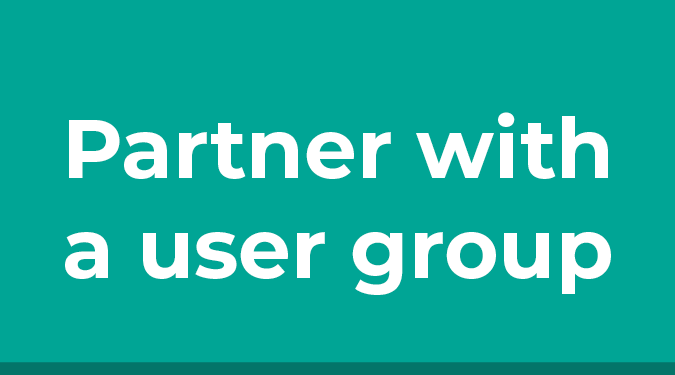
















Freedom to operate analysis, prior art,
novelty and IP landscaping for patentable
technologies – quick guide
This quick guide…
- Offers an approach to check if the technology can be commercialised without
infringing the intellectual property rights of others as early as possible.
- Provides an approach to check it is novel enough in the market to commercialise.
If in any doubt, seek professional advice from a patent attorney.
Freedom to operate (FTO): determining if your project infringes intellectual property rights of others
Prior art: any evidence that your invention is already known (EPO)
IP landscaping: a snapshot of the patent situationof a specific technology
Previous
Next
Contents







Freedom to operate analysis, prior art, novelty
and IP landscaping for patentable technologies – quick guide
1. Talk to the academic
Establish:
-
What tech they are aware
of that is similar.
- What other research
groups there are working
in similar areas.
They may consider their technology to be unique,
and it is your role to check
as early as possible that is
the case.
2. Check the novelty
of the technology
- Start with a broad search using a search engine to find potential similar products.
You might find news or journal articles, or get a feel for if there are many competitors already on the market
Tip! Start with a user-friendly patent database
-
Patsnap is a user-friendly resource that searches patent databases such as the EPO and USPTO. Results can be ordered by relevance, grouped by industries, and filtered by sub industries.
-
It is a licensed software that must be paid for.
Previous
Next
Contents







Freedom to operate analysis, prior art, novelty
and IP landscaping for patentable technologies – quick guide
3. Delve deeper with
a manual search
-
Use patent search tools provided
by national and regional patent offices.
-
Typically this would include
Espacenet (EPO) and the USPTO
-
Using the comprehensive databases provides access to global dossiers of paperwork including examiners notes, to get a better understanding of your FTO.
4. Adjust your
market plans
-
Your findings may uncover competitors operating in
your market.
-
At this point you may need
to adjust the geographical markets your technology might launch in, or the scope of the technology application.
5. Consider a
full search
-
Assess if it is worthwhile paying a patent attorney to complete a full Freedom to Operate search.
-
This can cost roughly £100+ for a UK search, £1500+ for a European search.
Previous
Next
Contents







Freedom to operate analysis, prior art, novelty
and IP landscaping for patentable technologies – quick guide
6. Review the patent landscape
-
Preparing a report on the IP landscape
will influence the facets of the technology and give you confidence in the technology opportunity before paying for a patent attorney.
-
The report will also give insight into potential collaborators or licensees
for the technology.
-
The report will also provide insight into competitors who may try to stop the development of the technology.
7. Producing the report
-
Using patent search tools again, prepare a list on
intelligence you have uncovered:
-
Patent reference number.
-
Title of patent.
-
A brief description of what the patent is for.
-
A description of how it will affect the project,
including similarities it has with the technology in question.
-
You could also include the most relevant claims, and
the search terms you used in the report – and the success rate/hits back from the searches.
Tip!
If you find
a potenital infirngement, you are obliged to notify your patent attorney
Previous
Next
Contents







Translate is a partnership between the universities of Leeds, Bradford, Huddersfield, Leeds Beckett and York that works to improve health and wealth by translating early-stage ideas into new medical technologies.
Translate – a successful early stage innovation programme case study
Translate aims to:
- identify and progress medical technology opportunities
- increase innovation capability among Leeds City Region academics
- foster and facilitate research that is better aligned to
clinical, patient and public drivers.
Translate’s approach to supporting and progressing projects relies
on ensuring that innovative ideas are validated in the market place
at the earliest possible stage. This process focuses on developing technologies with the greatest potential and making sure they meet
the needs of end users.
We talk to academics right at the start of their project development. Patients, carers and clinical professionals who might ultimately use the products are also consulted early in the process, and this input helps influence the direction taken. We introduce academics to the right people, forming longer term partnerships with commercial organisations, academic collaborators or clinical and patient representatives. Getting this right puts our research teams in great shape to apply for funding and accelerate their technology along the translational pipeline.
Funded by HEFCE (now Office for Students), the programme provides researchers at the partner universities with access to a dedicated innovation team experienced in progressing technologies to market. It also provides a model for successful innovation, innovation training and development, and collaboration within the higher education sector.
Previous
Next
Contents







Translate – a successful early stage innovation programme case study
We often kick-start this process through innovation workshops.
At the start of the programme we mapped out existing academic expertise across the region, and identified areas of the healthcare system where this could be best applied.
This enabled us to develop a range of workshop themes, such as assistive technology, wound care, and long term health conditions. The workshops are delivered in partnership with regional and national clinical organisations, and bring together diverse groups of people – including academics, industry, patients, clinicians and commissioners – to discuss specific unmet clinical needs and develop potential solutions.
Partnerships developed at the workshops have then been supported by Translate’s Technology Innovation Managers – taking them through the value proposition creation, mapping and proof of concept stages – leading to some truly innovative projects.
We’ve developed capability in other ways too, for example, technology scouting through our roadshows and surgeries held in our partner institutions have enabled us to support academics through action learning.
Our interventions have also introduced academics from different disciplines to the medtech space, actively supporting and facilitating technology convergence.
Previous
Next
Contents







Translate – a successful early stage innovation programme case study
£17.8m
funding pursued
Our achievements: 2.5 years of early-stage innovation:

119
project opportunities identified
113
companies actively participating
43
funding applications
supported
128
academics involved
88
clinicians actively participating
£12m
public sector income generated
19
engagements with additional universities






Moving early stage technology forward –
fast: Fluorescent dyes for medical imaging
Support from Translate has helped Professor Joe Sweeney
to develop several potential clinical applications for his
early stage technology: a simple chemical process to
create florescent compounds.
The first application – using dyes for florescent image-guided surgery – was spotted by Translate Technology Innovation Manager, Dr Danielle Miles, following a preliminary market opportunity analysis which looked at where florescent dyes
are currently used in the medtech and healthcare sectors.
Translate put Professor Sweeney in touch with Professor
David Jayne from the University of Leeds, who is interested
in applying this technology in colorectal cancer surgery,
to see if the fluorescent compounds could be used to
precisely map the boundary of a tumour during surgery,
to ensure complete resection.
Professor Jayne then introduced Professor Sweeney to a collaboration, led by the University of Glasgow, developing capsule endoscopy – an pill that would be swallowed and then enable a patient’s bowels to be imaged. And a further contact has been made, through Translate, with medical technology firm Neotherix, who are interested in the dyes as part of their work on wound scaffolds for oral infections.
Professor Sweeney’s compounds have a number of attributes that differentiate them from florescent dyes already in use, in terms of their colours, what they are made from and how
easily they penetrate membranes.
To help Professor Sweeney and the University of Huddersfield decide if this constituted enough to warrant a patent, Dr Miles did a preliminary analysis, to assess what intellectual property already existed and how much novelty the technology offered. This work enabled a patent on
the technology to be filed in February 2017.
“It’s very difficult to assess the market and potential impact of a product that doesn’t yet exist,
so Translate’s support in this has been really helpful,” says Professor Sweeney, who is now at Lancaster University. “I’ve been impressed not only with the quality of the work they’ve done for us, but the speed at which they’ve done it, which has been key to moving our project forward.”
Previous
Next
Contents







A smartphone app to improve postnatal hospital discharge processes
Dr Mel Cooper from the University of Bradford’s Faculty of Health Studies was almost ready to give up on her research idea to improve the post-natal hospital discharge process, but then she was put in touch with Translate.
“I’d hit a real block when a grant bid was rejected, but working
with Translate got the project moving again.
The issue we want to tackle is the excess of information given
to women when they leave hospital after giving birth, mostly leaflets but some verbal. The reality is women just don’t take
it all in, especially if there are any language issues as well.
Our idea, developed with Professor Mohammed Mohammed,
is a digital animation to show women at discharge, to convey
the most important information they need to retain.
On Translate’s advice, we broke down the project into smaller sections, to open up more funding options and allow us to focus. Because advice on the mother’s risk of sepsis was very patchy,
we chose this first.
Translate’s suggestion – and funding – for focus groups to strengthen our case was really key.
We ran three to ensure a wide demographic: with student midwives about to qualify, with migrant women and with women who’d paid for antenatal education through the NCT.
They all said the same thing: with midwives over-stretched and women keen to get home,
there’s too much information at discharge, advice is not consistent and it’s too rushed.
They agreed an animation would be better.
We found a suitable funder but the deadline was really tight – just ten days – plus we had to find a partner company. Without Translate, that would have been impossible. Through their strong regional links they recommended HMA in Barnsley, set up and attended the first meeting, and supported us to prepare the funding bid. With the findings and evidence from the focus groups, it was successful!
We’re now working on a prototype animation and app and Translate is supporting us to run
more consultations with stakeholders. The prototype and additional user feedback will help
us get more funding to develop the final version and build the evidence base to support
adoption into the NHS. Translate has already suggested larger pots of money we can bid for. Their support has been brilliant, helping to keep me motivated.”
Previous
Next
Contents







Scanning technology that can
reveal bacteria in wounds
Scanning technology that can reveal bacteria in wounds and help monitor the healing process could enable nurses to make better treatment decisions for patients.
A partnership between 3D-scanning specialists, Cadscan,
the University of York and the NIHR Wound Prevention and Treatment Healthcare Technology Cooperative (WoundTEC HTC) is working to develop software that can deliver objective information about wounds via an app.
A workshop organised jointly by Translate and the WoundTEC HTC provided the springboard for the project, which has since been awarded funding by Innovate UK. The workshop brought together researchers and industry partners who have the technical expertise, with clinicians working in the field of
wound care.
Helen Petrie, Professor of Computer Science at the University
of York, who is designing a user interface for the software, says: “New technology is often developed without enough attention to how people are actually going to use it, so being able to discuss this early on from a clinical point of view was really important.”
Dr Alastair Buchanan, Managing Director of Cadscan agrees: “The value of the Translate workshop was in being able to get together with clinicians who really know their stuff and
can clearly articulate the challenge that needs to be addressed.”
The system the team is developing could be used in the clinic or by community nurses carrying out home visits. They would take a picture of the wound using a specialist camera which uses multi-spectral imaging to locate any bacteria.
The team is also developing methods of extracting and analysing complex visual information from the images. This will enable the images to be further processed via an app on a tablet to give objective information about the severity or the type of infection and, over time, assess how well and how rapidly the wound is healing.
The app will also link to guidance from the National Institute for Health and Care Excellence, providing recommended treatment options.
“Our aim is to give community nurses rapid access to good quality guidance based on objective measures of the wound, making wound diagnosis and treatment more accurate
and more efficient,” says Professor Petrie.
Previous
Next
Contents







Matching emerging technologies with growing markets: Small, sensitive and low-cost silicon biosensor technologies
Silicon photonic biosensors, used to detect disease biomarkers, are already in use in biomedical laboratories. But they require bulky, expensive instrumentation to process the information they provide and this means
they can’t be used directly with patients.
Professor Thomas Krauss and his team at the University of York are developing a highly sensitive alternative that can be read by
a simple camera. The technology would enable low cost, reliable hand-held devices to be used to get read outs from his sensors. Enabling tests to be conducted at patient bedsides would reduce delays in diagnosis, and potentially transform the marketplace for point of care diagnostics.
The potential applications for this innovation are very broad,
but Translate has been providing Professor Krauss with the commercial and clinical knowledge needed to focus on the
right market sector.
“As an academic, I like playing with ideas and trying out new things, but that’s not the best way to bring a product to market,” says Professor Krauss. “Translate understands the market and the clinical context, which helps to keep a focus on the real problem you’re looking to tackle.”
Translate carried out an initial market assessment and used this to help Professor Krauss draft a pathways to impact statement for a successful £1.1m bid to the Engineering and Physical Sciences Research Council.
Professor Krauss will be using this funding to improve the sensitivity of his biosensors to the detection levels of more expensive sensors. The grant will also enable him to carry out proof of concept work using human urine samples – a crucial step towards commercialisation.
In addition, Translate has acted as a conduit between Professor Krauss and a technology transfer company, which is interested in either forming a spin-out company or licensing
the technology. The aim has been to move the technology forward as fast as possible
towards commercialisation. And, says Professor Krauss, they’ve made the process very enjoyable as well.
“I look forward to the meetings with Translate – the Technology Innovation Managers
are very positive and encouraging which bolsters your enthusiasm,” he says. “With their understanding of suppliers, users and clinicians, they really help you to see beyond
the academic ivory tower.”
Previous
Next
Contents







Translate team
Dr Josephine Dixon-Hardy, Director of Medical Technologies Innovation
Dr Lisa Hill, Innovation Development Manager
Dr Danielle Miles, Technology Innovation Manager
Dr Sean Clarkson, Technology Innovation Manager
Rowan Grant, Communications and Engagement
Manager, Author of this Good Practice Guide
The University of Leeds has a long track record of successful collaboration in medtech, progressing medical technologies through to market. The Translate programme builds on a tried and tested approach to medtech innovation developed over many years through the Medical Technologies Innovation and Knowledge Centre (IKC)
Acknowledgements
Translate Executive Management Group
Andrew Aldridge, Medical Technologies IKC
Andy Duley, University of Leeds
Chris Herbert, University of Leeds
Graeme Howling, Medical Technologies IKC
Chris Hudson, Leeds Beckett University
Gary Jones, Leeds Beckett University
Karen Ousey, University of Huddersfield
Angela Rutherford, University of Bradford
Stephen Smith, University of York
Julian Sorrell, Leeds Beckett University
John Steele, University of Bradford
Liam Sutton, University of Bradford
Joe Sweeney, University of Huddersfield
Barry Timmins, University of Huddersfield
Pete Twigg, University of Bradford
Jim Walsh, University of York
Geoff Whiteley, University of York
Additional partners
Dr Alex Booth, Full Spectrum Innovation Ltd
HEFCE
Office for Students
Previous
Next
Contents







Useful links and contacts


Previous
Next
Contents

hello@translate-medtech.ac.uk








